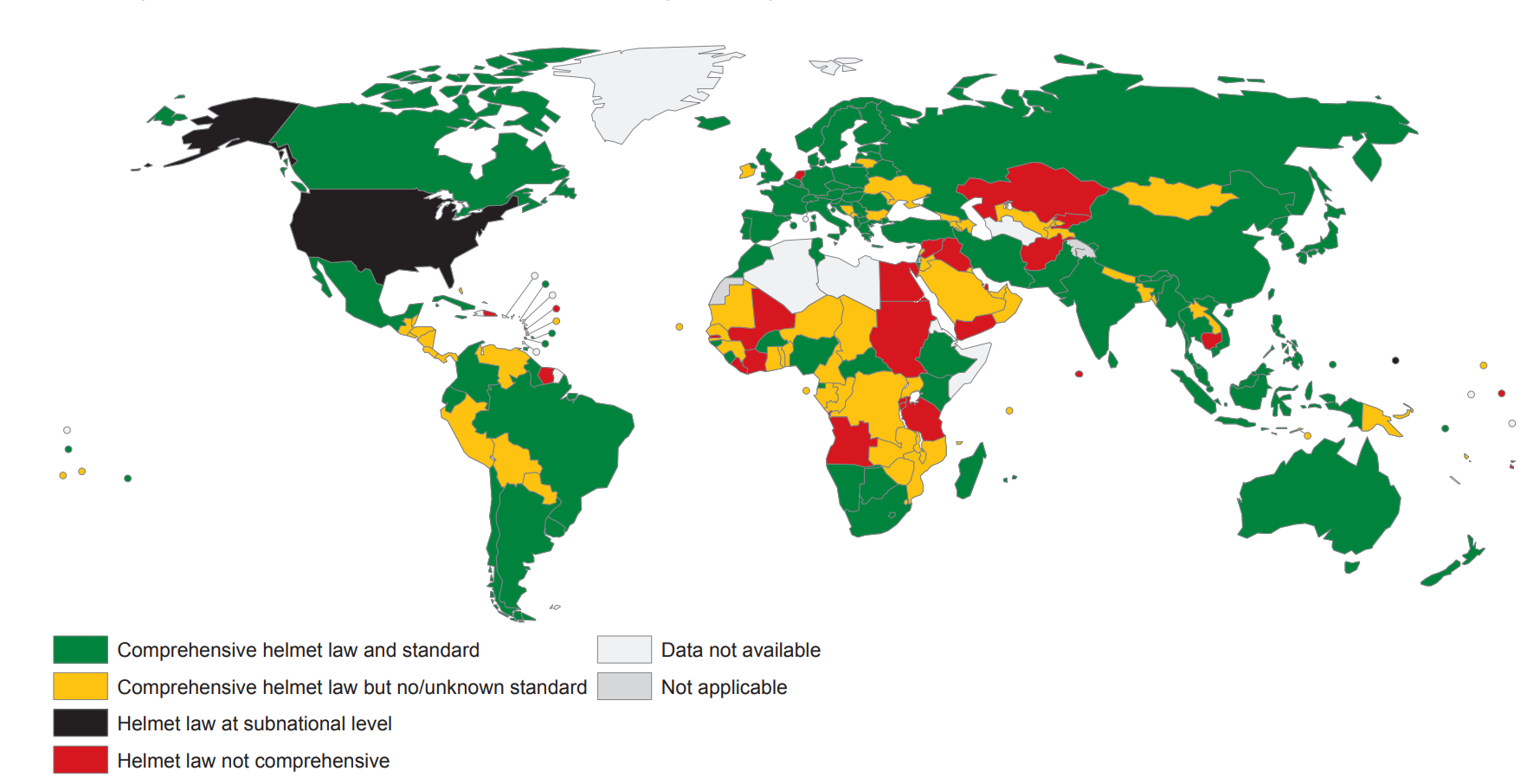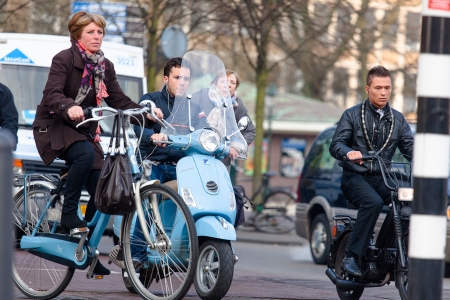Below a number of measures will be discussed that can improve the safety of (light) mopeds.
Improving light moped and bicycle facilities
Like cyclists, (light-)moped riders are hindered by obstacles on or along the cycle path and by cycle paths that are narrower than prescribed in the guidelines [3] [19].Safety on cycle paths can be improved by removing obstacles on and along the bike path and by designing cycle paths according to the guidelines (e.g. width and curve radius). More measures to improve the safety of (light-)moped riders on the cycle path, can be found in Davidse et al. (2017) [3].
Enforcement of riding speed instead of construction speed
Measurements show that nearly all (also not tuned up) mopeds exceed the maximum allowed speed of 25 km/h (see also the question How fast do light-moped riders travel?). Especially on the cycle path this leads to (subjective) unsafety and perceived inconvenience. Analyses of light-moped crashes show that a speed that is too high (for the conditions) is an important crash factor [3] [4] (see also the question What are the causes of crashes involving (light-)mopeds?).
In addition to checking (light) mopeds on construction speed (via the dynamometer test), (more) enforcement of the maximum riding speed could be carried (for example with a laser gun). This has been possible since 2015 after amendments to the legislation [17]. This allows for the use of smaller error margins and more effective enforcement. Enforcement through a laser gun is less labour intensive, can be done at more locations, and can change locations more rapidly hence making it less easy to dodge control. The effectiveness of enforcement is subject to sufficient enforcement effort (see also SWOV Fact sheet Police traffic enforcement).
Light moped on the roadway
Although injury crashes due to collisions between light-moped riders and cyclists on the cycle path are not frequent [3] [10],the light moped on the bike path is seen as a source of (subjective) unsafety and inconvenience. To make it possible for municipalities to move the light moped to the roadway – with mandatory helmet use –in certain locations, the Minister has sent a draft decision to Dutch Parliament [20].
An assessment of the road safety effects of moving the light moped - with mandatory helmet use- to the roadway that was made for the city of Amsterdam (measure Light moped on the roadway; SOR) found an annual reduction of 261 casualties (-38%) [8]. The largest estimated safety gains are achieved by an expected ‘modal shift’, that is to say: after the measure is introduced light-moped riders choose another, safer mode of transport. Due to the large uncertainties in estimating the effect, in the absence of factual information on safety effects, it is recommended not to introduce the measure SOR without mandatory helmet use, to evaluate the measure carefully with explicit attention to the speed difference between light-moped s and cars on the roadway. Davidse et al.[3] comment that the speed differences between cars and light mopeds on 50km/h roads will be considerable as the legal maximum speed for light mopeds is 25 km/h.
Mandatory helmet use for light-moped riders
It is remarkable that light-moped riders in the Netherlands do not have to wear a helmet. In the few countries that know a moped (according to Davidse et al. [3] light mopeds can only be found on the roads in the Netherlands, Belgium, Germany, Denmark, Sweden and Switzerland) it is mandatory to wear a helmet. The Netherlands is the only country in Europe where a light-moped rider can ride without a helmet (see Figure 5), whereas the protective effects of a helmet are large [21] (see also the question What is the effect of the moped helmet?).
However, it is not clear what the effect of mandatory helmet use for light-moped riders would be on road safety in its entirety. It could be the case that light-moped riders, if they do have to wear a helmet, change to the moped, or in fact, licence their light moped as a moped at the Netherlands Vehicle Authority RDW (the AM licence is also valid for this category). It's uncertain what the ultimate effect on road safety will be, as we don't know the individual risk of riding a moped as opposed to riding a light moped (see also the question How high are the risks for (light-)moped riders in Dutch traffic?).
 Figure 5. Overview of helmet use legislation. Source: WHO, 2013 [22]
Figure 5. Overview of helmet use legislation. Source: WHO, 2013 [22]
